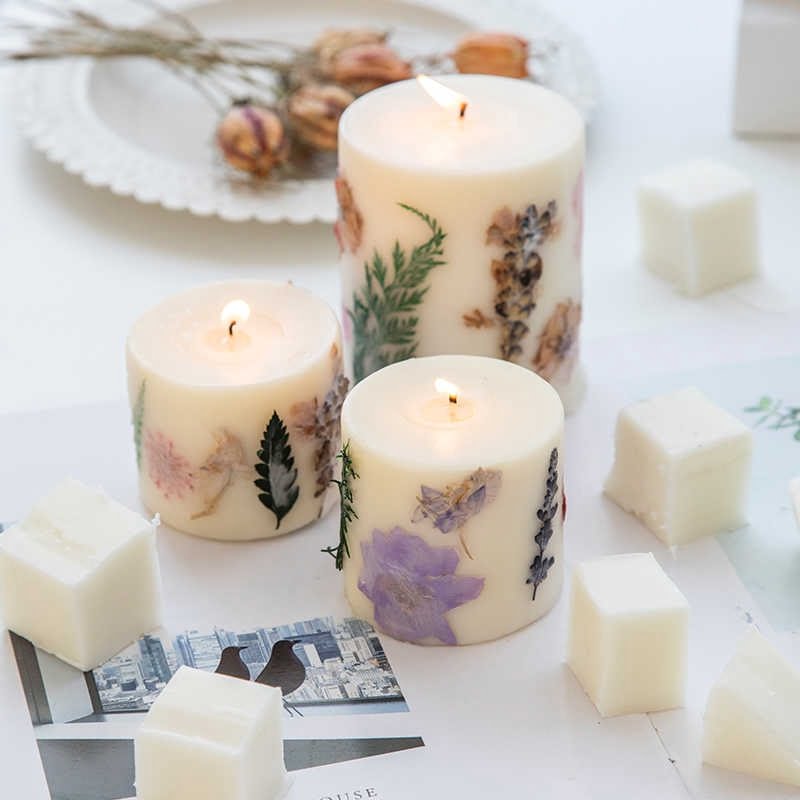If you are a candle maker looking for an all-natural and unique ingredient to enhance your products, look no further than bayberry oil for candle making. This precious oil has a rich history and a variety of benefits that make it an invaluable addition to any candle maker’s toolkit.
Bayberry oil is derived from the wax produced by the berries of the bayberry shrub, also known as Myrica cerifera. This wax is then carefully processed to extract the fragrant and aromatic oil that is highly prized in the world of candle making. The use of bayberry oil dates back centuries, making it a time-honored tradition with timeless appeal.
In this article, we will explore the history of bayberry oil in candle making, its numerous benefits, different ways to incorporate it into your candle creations, tips for selecting high-quality bayberry oil, and best practices for handling and storing this valuable ingredient. Whether you are a seasoned candle maker or just starting out, you’ll discover why bayberry oil is a game-changer in the art of candle making.
The History of Bayberry Oil in Candle Making
The use of bayberry oil in candle making dates back to the colonial era in America. Early settlers discovered that the berries of the bayberry plant could be boiled to extract a green, waxy substance, which could then be used to make candles. This discovery was especially significant during a time when other wax sources, such as beeswax and tallow, were in short supply.
The process of making bayberry candles was labor-intensive and time-consuming, making them a luxury item reserved for special occasions or religious ceremonies. The scarcity of bayberry bushes in certain regions also contributed to the exclusivity of these candles. As a result, bayberry candles became synonymous with purity and prosperity, popular for use in Christmas and New Year’s celebrations.
Despite advancements in candle making technology and the availability of other wax sources, the tradition of using bayberry oil for candle making has endured. Today, bayberry candles are still highly regarded for their distinctive fragrance and unique green color. The historical significance and sentimental value attached to these candles have contributed to their continued popularity among consumers seeking high-quality, artisanal products.
| Bayberry Candle Fact | Details |
|---|---|
| Historical Significance | Associated with purity and prosperity |
| Modern Popularity | In demand for their fragrance and color |
Benefits of Using Bayberry Oil in Candle Making
Bayberry oil has been a popular ingredient in candle making for centuries, and for good reason. This natural wax is derived from the fruit of the bayberry shrub, and it offers a range of benefits for those looking to create high-quality, long-lasting candles.
One of the key benefits of using bayberry oil in candle making is its lovely aroma. The oil has a subtle, earthy scent that adds a pleasant fragrance to any candle. This natural fragrance is often preferred over synthetic scents by consumers who are looking for a more authentic and organic product.
Additionally, bayberry oil has a clean-burning property, which means that it produces less soot compared to other types of waxes. This can help maintain the cleanliness of your candles and reduce indoor air pollution when burning.
In addition to its aromatic and clean-burning qualities, bayberry oil also has a pleasing aesthetic appeal. Candles made with bayberry oil have a beautiful natural color that ranges from pale green to creamy white, adding an attractive visual element to your candles. This makes them an appealing choice for those who prefer natural-looking products or want to create candles with a unique look and feel.
| Benefits | Description |
|---|---|
| Aroma | Subtle, earthy scent adds a pleasant fragrance to candles. |
| Clean Burning | Produces less soot compared to other types of waxes. |
| Aesthetic Appeal | Produces natural colors ranging from pale green to creamy white. |
Different Ways to Use Bayberry Oil in Candle Making
Bayberry oil is a versatile and popular choice for candle making, offering a unique fragrance and numerous benefits. Here are some different ways to use bayberry oil in candle making:
Single-Source Bayberry Oil Candles
One way to use bayberry oil in candle making is to create single-source bayberry oil candles. This means using only bayberry oil as the fragrance and wax in the candle. This method allows the distinct and natural scent of bayberry oil to shine through, creating a pure and authentic experience for candle enthusiasts.
Blended Bayberry Oil Candles
Another approach is to blend bayberry oil with other complementary scents to create complex and layered fragrances. This could involve mixing bayberry oil with essential oils such as lavender, cedarwood, or vanilla to craft unique combinations that appeal to a wider range of preferences.
Decorative Uses of Bayberry Oil
In addition to using bayberry oil as a fragrance in candles, it can also be utilized for decorative purposes. For example, artisans can create beautiful designs on the surface of the candles using colored wax infused with bayberry oil. These decorative candles not only provide an aesthetic appeal but also emit the delightful aroma of bayberry when lit.
By exploring these various approaches, candle makers can harness the full potential of bayberry oil, creating diverse products that cater to different tastes and preferences within their market. Whether used alone or in combination with other scents, bayberry oil offers a luxurious and distinctive touch to any candle-making venture.
Tips for Choosing the Best Bayberry Oil for Candle Making
When it comes to making candles with bayberry oil, choosing the best oil is crucial for achieving the desired results. With so many options available in the market, it’s important to consider a few key factors before making your purchase.
Quality and Purity
One of the first things to look for when choosing bayberry oil for candle making is its quality and purity. High-quality bayberry oil will have a delightful aroma and a pale green color, indicating that it has been extracted from pure bayberries without any additives or synthetic ingredients. Look for oils that are labeled as 100% pure bayberry oil to ensure that you are getting the real deal.
Source and Extraction Method
The source of the bayberry oil and the extraction method used can significantly impact its overall quality. Opt for oils that are sustainably sourced and extracted using methods that preserve the natural properties of the berries. Cold-pressed or steam-distilled bayberry oils are ideal as they retain more of the beneficial compounds found in the berries.
Reputation of the Supplier
Another important factor to consider when choosing bayberry oil for candle making is the reputation of the supplier. Look for reputable suppliers known for their high-quality essential oils. Read reviews and testimonials from other candle makers who have used their products to get an idea of their reliability and customer satisfaction.
By considering these tips when choosing bayberry oil for candle making, you can ensure that you are getting a high-quality product that will enhance your candles with its unique fragrance and properties. Remember that investing in quality bayberry oil will ultimately result in better, longer-lasting candles that both you and your customers will love.
Step-by-Step Guide on How to Make Candles With Bayberry Oil
Bayberry oil is a popular choice for candle making due to its natural and aromatic properties. If you’re interested in making your own candles using bayberry oil, follow these simple steps to create beautiful and fragrant candles:
- Gather your materials: You will need bayberry wax, bayberry oil, candle wicks, a double boiler, a thermometer, and fragrance oils (optional).
- Melt the wax: Use a double boiler to melt the bayberry wax. It’s important to monitor the temperature with a thermometer to ensure that it doesn’t overheat.
- Add the bayberry oil: Once the wax has melted, carefully stir in the bayberry oil. The amount of oil you use will depend on your personal preference for fragrance intensity.
Using bayberry oil in candle making not only adds a pleasant aroma but also provides a clean and long-lasting burn. Whether you’re a beginner or experienced candle maker, incorporating bayberry oil into your creations can elevate the overall quality of your candles.
Best Practices for Storing and Handling Bayberry Oil
Bayberry oil is a valuable ingredient in candle making, and it’s important to store and handle it properly to ensure the quality of your finished products. Here are some best practices for storing and handling bayberry oil for candle making:
- Storage: When not in use, bayberry oil should be stored in a cool, dark place away from direct sunlight. This will help prevent the oil from oxidizing and losing its fragrance. A pantry or cupboard is an ideal storage location for bayberry oil.
- Container: Bayberry oil should be stored in a glass container with a tight-fitting lid to protect it from exposure to air and moisture. Make sure the container is clean and dry before transferring the oil into it.
- Handling: When handling bayberry oil, use clean and dry equipment to avoid introducing any contaminants. It’s also important to handle the oil with care to prevent spills and accidents.
It’s worth noting that bayberry oil has a relatively short shelf life compared to other carrier oils, so it’s best to use it within six months to a year for optimal results. By following these best practices for storing and handling bayberry oil, you can ensure that it retains its quality for use in candle making projects.
Safety Precautions When Using Bayberry Oil for Candle Making
When using bayberry oil for candle making, it is important to take certain safety precautions to ensure a safe and enjoyable experience. Bayberry oil is a potent essential oil that should be handled with care to avoid any accidents or adverse reactions. Here are some important safety precautions to keep in mind when using bayberry oil for candle making.
First and foremost, it is crucial to always use bayberry oil in a well-ventilated area. Essential oils like bayberry oil can release strong and potent aromas, which can be overwhelming if used in a closed space. Additionally, proper ventilation helps to reduce the risk of inhaling concentrated vapors, which can cause respiratory irritation or allergic reactions in some individuals.
Another important safety precaution is to handle bayberry oil with care to avoid skin irritation or allergic reactions. Always use gloves when handling undiluted bayberry oil and make sure to wash your hands thoroughly after use. If you accidentally get bayberry oil on your skin, wash the affected area with soap and water immediately.
Lastly, it is essential to store bayberry oil properly to maintain its quality and potency. Keep bayberry oil in a cool, dark place away from direct sunlight and heat sources. Make sure the container is tightly sealed to prevent oxidation and contamination. By following these safety precautions, you can enjoy the benefits of using bayberry oil for candle making while ensuring a safe and pleasant experience for yourself and others around you.
Conclusion
In conclusion, it is clear that bayberry oil has a long and rich history in the world of candle making. As we have seen, this natural and sustainable ingredient has been used for centuries to create beautiful and aromatic candles. Its unique properties make it a game-changer in the industry, offering numerous benefits that set it apart from other candle-making oils.
The benefits of using bayberry oil in candle making are extensive. Not only does it produce a clean and slow-burning flame, but it also gives off a pleasant aroma that is both calming and inviting. In addition to its aesthetic appeal, bayberry oil is known for its eco-friendly and sustainable nature, making it an ideal choice for those who are conscious of the environmental impact of their crafting materials.
When choosing the best bayberry oil for candle making, it is important to consider factors such as purity, quality, and sourcing. By following the tips provided in this article and taking proper precautions when handling bayberry oil, crafters can ensure they are making the most out of this valuable resource. With its rich history, numerous benefits, and versatile applications, there is no doubt that bayberry oil is truly a game-changer in the world of candle making.
Frequently Asked Questions
What Is the Best Oil to Use for Candle Making?
The best oil to use for candle making is typically a type of highly refined paraffin oil or soy wax. These oils have a low melting point, making them ideal for creating candles that burn evenly and cleanly.
What Does Bayberry Oil Smell Like?
Bayberry oil has a unique scent that is often described as sweet, spicy, and woody. It is also known for having hints of pine and fir, giving it a slightly earthy and fresh aroma.
Is Bayberry an Essential Oil?
No, bayberry is not typically considered an essential oil in the traditional sense. While it does come from the fruit of the bayberry plant, it is more commonly used in candle making and fragrance production rather than in aromatherapy or holistic healing practices.

Welcome to my candle making blog! In this blog, I will be sharing my tips and tricks for making candles. I will also be sharing some of my favorite recipes.





